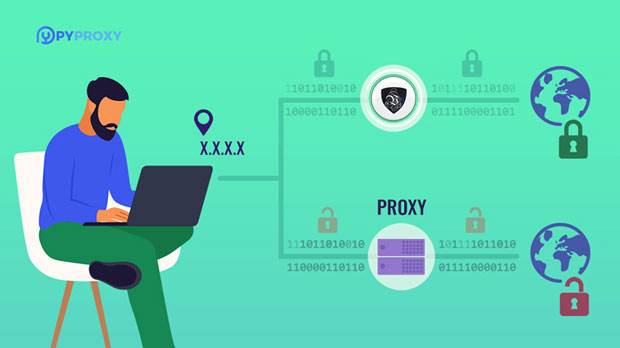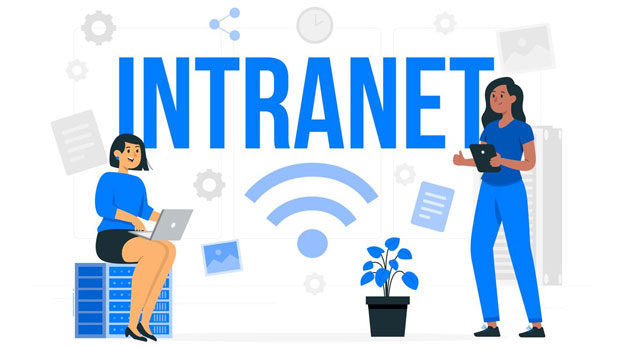In today’s rapidly growing world of big data, data collection has become a crucial aspect of research, business analytics, and online monitoring. One of the core components of successful data scraping or crawling is the proxy server. When it comes to choosing between HTTP, HTTPS, or sock s5 proxies for data crawling, understanding the differences is key. Each type of proxy offers its unique advantages, depending on the specific needs of the user. HTTP and HTTPS proxies are often favored for web scraping tasks, while SOCKS5 is preferred for more complex operations. This article will compare each proxy type, examining the strengths and weaknesses of HTTP, HTTPS, and SOCKS5, and how they impact the efficiency and reliability of data gathering. 1. Understanding the Basics of HTTP, HTTPS, and SOCKS5 ProxiesBefore delving into which proxy is best suited for data scraping, it's essential to understand what each type of proxy offers.- HTTP Proxy: The HTTP proxy is designed specifically for handling HTTP traffic. It is widely used for simple web scraping tasks. However, it is limited to handling only HTTP and HTTPS protocols, meaning it cannot process other types of traffic like FTP or torrenting.- HTTPS Proxy: HTTPS proxies are similar to HTTP proxies, but they support secure encrypted connections. This means they are ideal for scraping websites that use HTTPS for secure communication. They are more secure than HTTP proxies but have a similar functionality.- socks5 proxy: SOCKS5 is more versatile than both HTTP and HTTPS proxies. It can handle any type of internet traffic, including HTTP, HTTPS, FTP, and even peer-to-peer protocols like torrents. This makes SOCKS5 suitable for complex data scraping operations, where multiple protocols are involved.2. HTTP Proxy: Best for Simple Data Scraping TasksHTTP proxies are the most basic and widely used proxies in data scraping tasks. They are designed for handling web traffic efficiently. Since most websites still use HTTP or HTTPS, HTTP proxies can work with a majority of the sites and resources on the internet. The advantages of using HTTP proxies for data scraping include:- Speed: HTTP proxies tend to be faster than HTTPS or SOCKS5 proxies, as they do not require any encryption or decryption processes.- Simplicity: They are easy to set up and maintain, making them an ideal choice for simple data scraping projects.- Cost-effective: Since HTTP proxies are less complex, they tend to be cheaper compared to SOCKS5 proxies.However, HTTP proxies do come with certain limitations, such as:- Limited Security: HTTP proxies do not encrypt data, making them vulnerable to eavesdropping and man-in-the-middle attacks.- Inability to Handle Secure Sites: While HTTP proxies can access HTTP and HTTPS sites, they do not support encrypted connections, which could be a disadvantage when dealing with secure websites.3. HTTPS Proxy: The Go-To Choice for Secure Web ScrapingHTTPS proxies are an upgraded version of HTTP proxies, offering additional security through encrypted connections. This makes them the preferred choice for web scraping operations that require secure data transmission, especially when collecting sensitive information from websites that use HTTPS.The advantages of HTTPS proxies include:- Security: HTTPS proxies provide encryption, ensuring that the data transmitted between the client and the server remains secure.- Access to Secure Websites: They are capable of accessing websites that require HTTPS, making them more versatile than HTTP proxies.- Privacy Protection: The encryption provided by HTTPS proxies helps protect your identity and activities from being tracked.However, HTTPS proxies also have some downsides:- Slower Speed: Due to encryption, HTTPS proxies tend to be slower than HTTP proxies.- Cost: HTTPS proxies are generally more expensive than HTTP proxies, as they offer better security features.4. SOCKS5 Proxy: Ideal for Complex Data Scraping TasksSOCKS5 proxies are the most advanced type of proxy, offering the ability to handle any type of internet traffic, including HTTP, HTTPS, FTP, and even peer-to-peer traffic. They are perfect for more complex data scraping tasks, such as crawling multiple websites that use different protocols or scraping websites that employ advanced anti-scraping techniques.The benefits of using SOCKS5 proxies for data scraping include:- Flexibility: SOCKS5 proxies can handle multiple types of internet traffic, making them more versatile than HTTP or HTTPS proxies.- Bypass Restrictions: SOCKS5 proxies can easily bypass restrictions like geo-blocks and IP bans, making them ideal for accessing websites with anti-scraping mechanisms.- Reliability: Since SOCKS5 proxies are not protocol-dependent, they are less likely to be detected and blocked by websites.However, SOCKS5 proxies come with their own challenges:- Complexity: Setting up and maintaining SOCKS5 proxies can be more complex compared to HTTP and HTTPS proxies.- Slower Speeds: Because of their versatility, SOCKS5 proxies might be slower than HTTP proxies, especially when dealing with multiple types of traffic.- Higher Cost: SOCKS5 proxies tend to be more expensive due to their advanced features.5. Choosing the Right Proxy for Your Data Scraping NeedsWhen deciding between HTTP, HTTPS, and SOCKS5 proxies for data scraping, there are several factors to consider:- Security Requirements: If the data you're collecting involves sensitive or personal information, an HTTPS proxy or SOCKS5 proxy would be more suitable due to the encryption and security they provide.- Speed: If you need to scrape data quickly and from less complex websites, an HTTP proxy might be sufficient. However, if you're dealing with secure websites, an HTTPS proxy will be necessary.- Complexity of the Task: For basic scraping tasks, HTTP proxies should be enough. But if you're dealing with large-scale, multi-protocol scraping tasks, SOCKS5 proxies are more appropriate due to their versatility and ability to handle different types of internet traffic.- Budget: While HTTP proxies are the cheapest, SOCKS5 proxies are the most expensive. If you're on a tight budget, an HTTP proxy may be the most cost-effective choice, but if you're doing more complex work, investing in SOCKS5 could be worth it.6. Conclusion: Which Proxy Is Best for Data Crawling?In conclusion, each proxy type—HTTP, HTTPS, and SOCKS5—has its own strengths and weaknesses. If you're working with basic data scraping tasks and need speed, an HTTP proxy is ideal. For secure data collection, HTTPS proxies offer encryption and access to secure websites. However, for complex and large-scale data crawling operations, SOCKS5 proxies are the best choice due to their versatility and ability to bypass restrictions.Ultimately, the right choice depends on the nature of your data collection needs. By understanding the differences between HTTP, HTTPS, and SOCKS5 proxies, you can make an informed decision to optimize your data scraping process, ensuring efficiency, security, and scalability.
Jul 03, 2025



































































